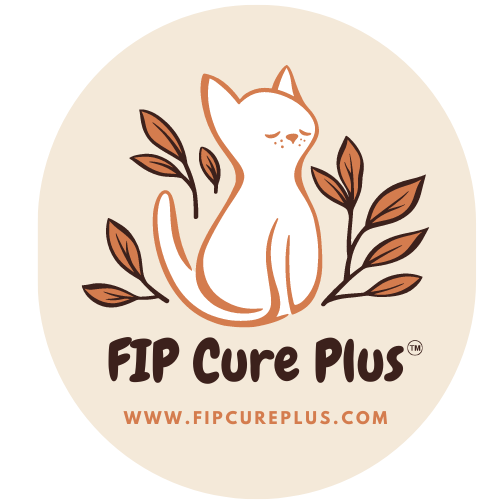Determining the Correct Dosage to Treat Your Cat's FIP
Share
4 Crucial Factors for Successful FIP Treatment in Cats
Choosing the correct treatment for your cat's feline infectious peritonitis (FIP) is vital for their recovery. Here are the four most important factors that can significantly impact the success rate of FIP treatment:
-
Opt for GS-441524: This antiviral medication is the preferred choice for treating FIP infections in cats.
-
Address Concurrent Ailments: Treat any additional health issues your cat may have alongside FIP to ensure a more comprehensive recovery.
-
Prompt Treatment: Start treating FIP as soon as it is diagnosed. Delays can lead to avoidable fatalities.
-
Correct Dosage: Ensuring the correct dosage is administered can mean the difference between life and death, and between relapse and full recovery.
At Fipcureplus, we have extensively researched and written about the effectiveness of GS-441524 in treating FIP in cats. (Read our articles here). GS-441524 is currently the only clinically proven treatment against the FIP virus. Cats often suffer from various physical complications due to FIP infection, and addressing these along with the primary treatment is crucial for complete recovery.
Challenges in FIP Diagnosis
Timely diagnosis of FIP can be challenging, particularly with the non-effusive dry form of FIP, which is hard to detect in the early stages. Extensive and expensive tests are often required to diagnose FIP accurately, something both veterinarians and cat owners may hesitate to pursue when the cat still appears relatively healthy. Currently, no definitive tests for FIP are available, and often, cats are diagnosed correctly only in the late stages of the infection. At Fipcureplus, we are committed to developing an affordable and definitive test for future veterinary use.
Improving Treatment Success Rates
While improving the timeliness of an accurate FIP diagnosis may be difficult, adhering to the recommended dosage can significantly enhance treatment success rates. Our dosage table is based on the analysis of treatment results from nearly 1,000 cats and consultation with veterinarians across four continents:
-
Wet FIP: 6 mg/kg of body weight
-
Dry FIP: 8 mg/kg of body weight
-
Ocular FIP: 10 mg/kg of body weight
-
Neurological FIP: 10 mg/kg of body weight
-
Use our dosage calculator to determine the exact amount of GS-441524 your cat needs for FIP treatment.
Observing Recovery Signs
When the correct dosage is administered daily, FIP viral replication slows and eventually stops. Your cat's immune system will begin to recover, with noticeable signs of improvement within 3-5 days, including relaxed breathing, increased appetite and physical activity, more responsiveness to owners' voices and touches, and clearer eyes. Watch videos of cats that have successfully recovered from FIP using our treatment here.
Adjusting Dosages as Needed
It’s important to note that each cat responds differently to GS treatments. Our dosage table provides the minimum recommended dosages for each type of FIP infection. Higher dosages may be necessary if your cat shows little response to the treatment, experiences regression during treatment, or relapses after treatment completion.
In cases where cats succumbed to FIP, experienced regression during treatment, or relapsed after treatment, common factors included delayed treatment initiation or insufficient daily dosages of GS-441524. In such instances, cats initially showed improvement but then suffered a regression in symptoms. Improvement resumed only after increasing the dosage.
For any questions regarding your cat's FIP treatment, contact us. Our experts are ready to share their knowledge and experience to help you.
Share this with someone who needs to read it.
Published by: fipcureplus.com
Follow us on Facebook: facebook.com/fipcureplus
